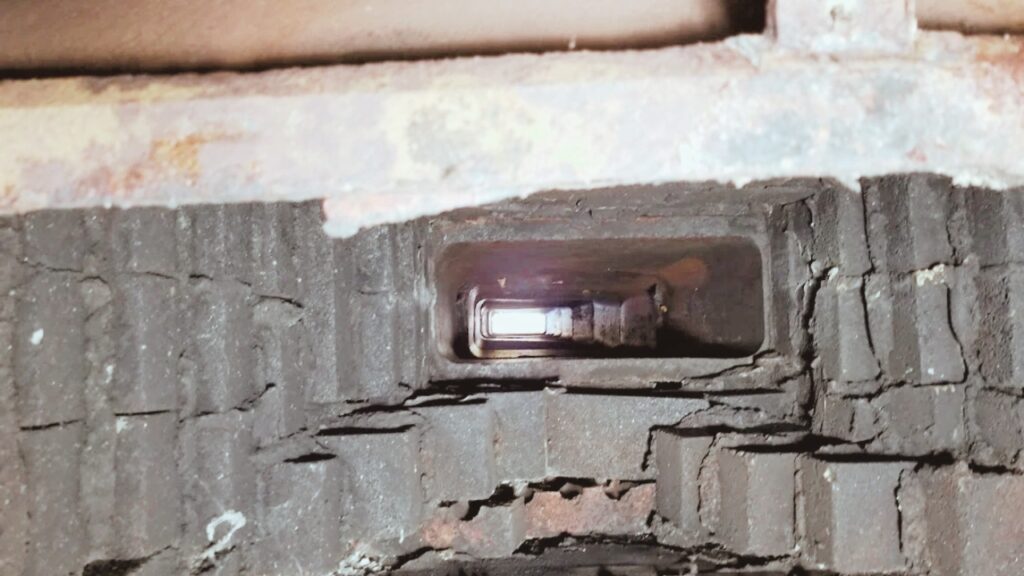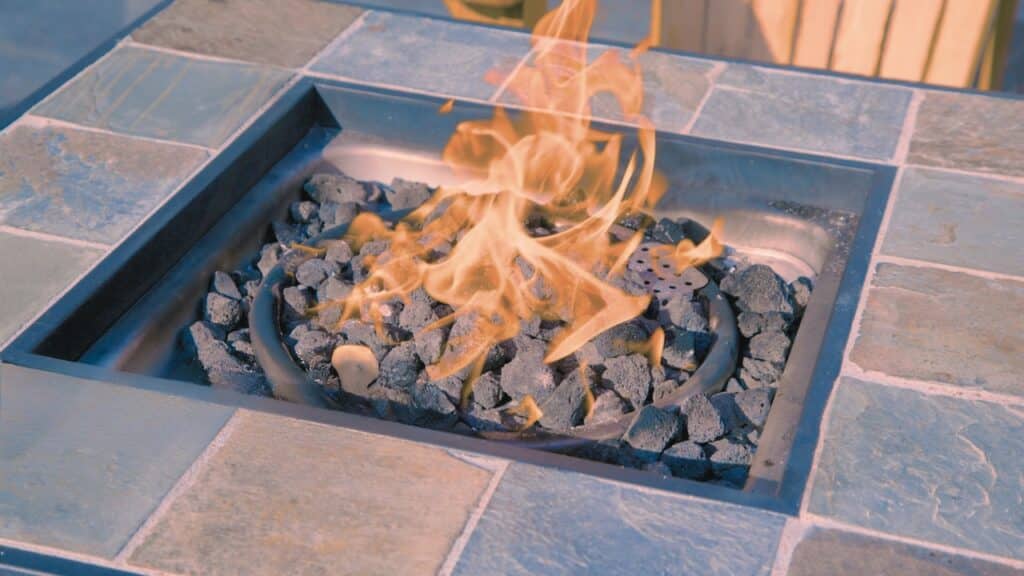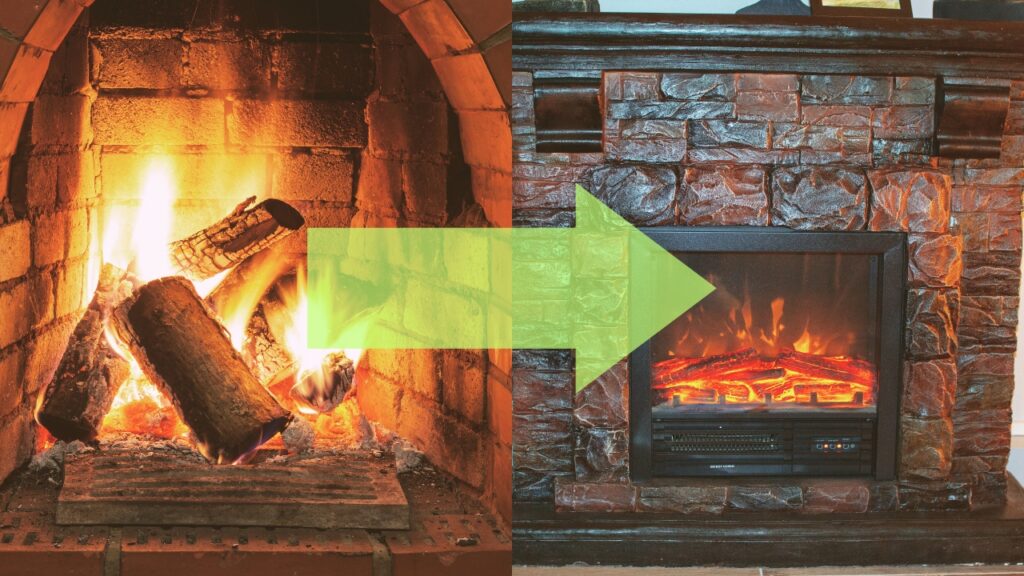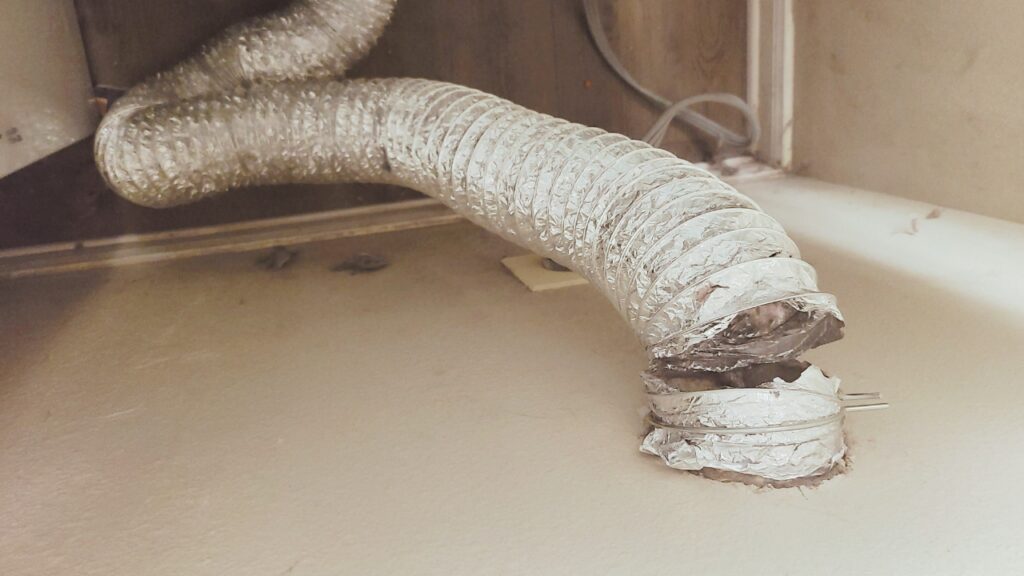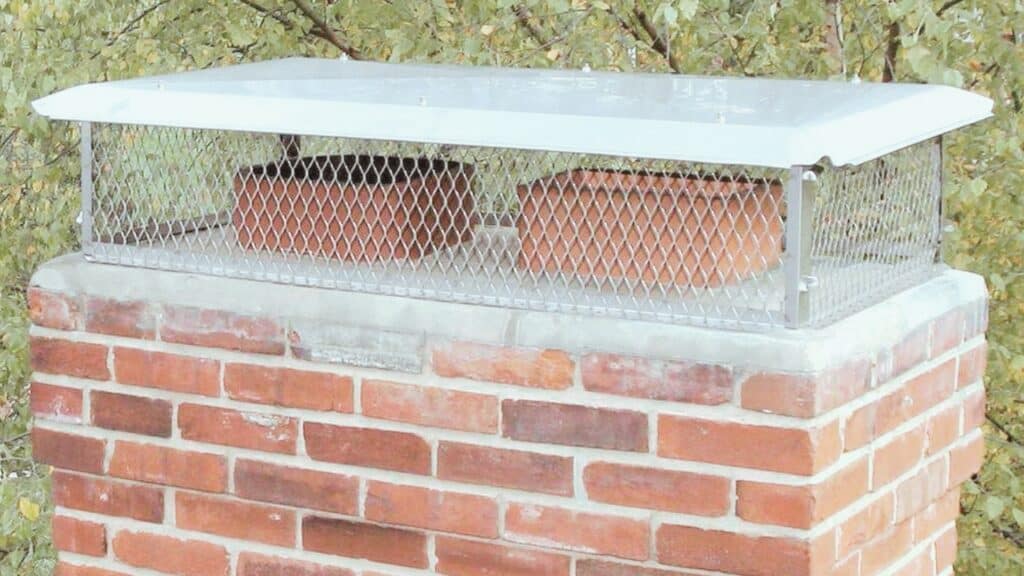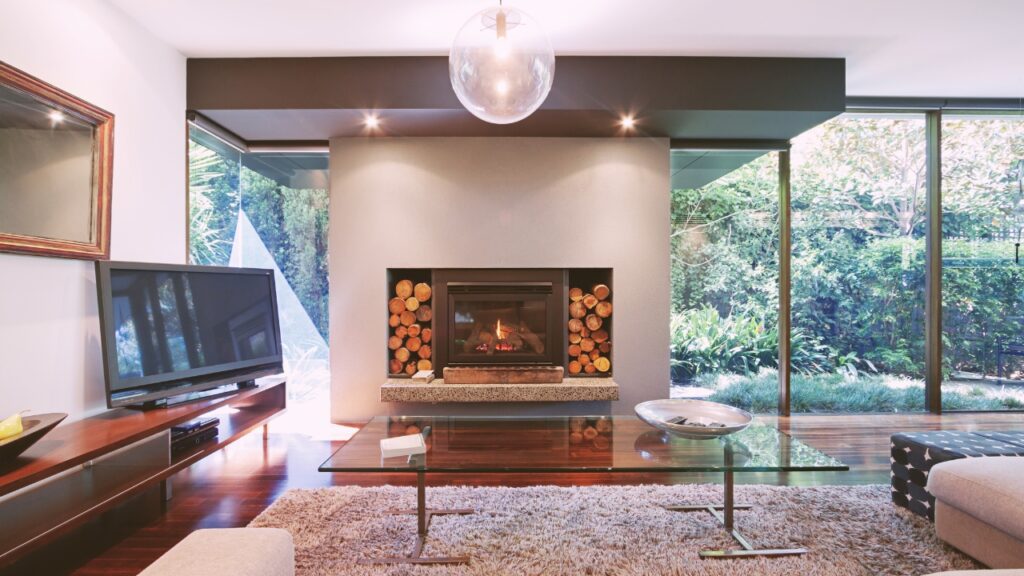Chimney fires are often dramatic events that can cause serious damage to your home or building and put your life, and that of your loved ones, at risk.
Most people are of the notion that a chimney fire burns itself out. While it’s not entirely wrong, it’s dangerous to assume that a chimney fire will burn itself out.
A chimney fire is caused by combustible materials (soot, creosote, etc.) inside the chimney. These materials will, eventually, burn off and go out. However, before that happens, the fire spreads through combustible house materials near the chimney and causes immense damage.
You want to avoid chimney fires at all costs. And for that, you need to understand everything about chimney fires, what causes a chimney fire, and how to prevent chimney fires.
The following article will provide you with all the knowledge you’ll need to keep yourself, your loved ones, and your home safe from the dangers of a chimney fire.
So, let’s get started.
Why Do Chimney Fires Start?
Chimney fires occur when there are combustible materials such as soot, creosote, debris, etc. present inside the chimney. The most notorious, however, is creosote since it’s the most flammable of all.
A black/brown substance, creosote consists of unburnt wood particles produced as a result of incomplete combustion. These unburnt particles are carried up into the chimney via smoke. Since the upper portion of the chimney is relatively cooler, condensation occurs and these unburnt particles stick to the chimney lining, in the form of creosote.
Creosote can burn at temperatures as low as 451 degrees F. That’s alarming because temperatures inside an active chimney are usually more than 450 degrees F.
Most chimney fires, as one can imagine, occur because the flames from the fireplace (or any other heating appliance) reach the creosote deposits. Sparks or embers from the fireplace can also start fires.
However, direct contact is not necessary. Chimney fires can also occur due to hot flue gasses raising the temperature of the creosote deposits high enough for combustion.
Therefore, if you think you’ve got a creosote buildup inside your chimney lining (flue), never start a fire because there’s a high chance it’ll result in a chimney fire.
Are Chimney Fires Common?
According to a National Fire Protection Association (NFPA) report, most house fires in America were caused by heating equipment and were more common during winter. Moreover, uncleaned heating equipment was the most common factor when it came to house fires caused by heating equipment (resulting in ¼ house fires.)
It is estimated that municipal fire departments in America responded to 48,530 (on average) house fires caused by heating equipment between 2014 to 2018. These fires killed 500 people while 1,350 civilians got injured.
So, it’s safe to assume that chimney fires are fairly common and extremely dangerous.
Chimney Fire Signs: How to Tell Your Chimney Is on Fire?
Chimney fires can either be fast-burning or slow-burning. Fast-burning chimney fires are louder and much more noticeable. Slow-burning chimney fires, on the other hand, are not so obvious.
Fast-burning Chimney Fire Signs
Ever heard the sound a large bonfire makes? That’s the kind of sound you’d expect when a fast-burning chimney fire starts. Apart from the loud, popping sound, you’ll witness dense smoke coming out of your chimney or your fireplace. You’ll also see flames or burning creosote popping out of your chimney top.
The smell of chimney fires is quite pungent and it sounds like a freight train.
Slow-burning Chimney Fire Signs
Sometimes, the temperature inside the chimney is enough to ignite the creosote deposits but there’s not enough creosote or airflow inside. In such cases, the fire is not large enough to be visible from the outside. Nevertheless, it’s as destructive and dangerous as a fast-burning chimney fire because it can crack the chimney lining and spread into your home.
Since slow-burning chimney fire is not easy to detect, it’s much more dangerous.
Signs That You’ve Already Had a Chimney Fire
Sometimes chimney fires occur and die out without causing any obvious damage. These types of fires shouldn’t be ignored as they usually crack the inner lining of your chimney and allow carbon monoxide (CO) to enter your living space. A house fire also impacts the structural integrity of your chimney and increases the chances of a future chimney fire.
If such a chimney fire has occurred, it’s important to call in a professional chimney sweep service for a thorough inspection, cleaning, and repairing of your chimney to avoid future chimney fires.
But how do you know that a chimney fire has occurred? Here are a few signs to look out for:
HoneyComb Creosote
When the creosote inside a chimney flue undergoes combustion, it expands and a puffy substance (similar to a honeycomb) is left behind. During a chimney fire, the creosote deposits inside ignite and get puffed up.
Puffy creosote deposits not only signify that a chimney fire occurred, but they are also dangerous as they block the chimney flue. A blocked chimney flue is dangerous as it increases the chances of another chimney fire as well as CO poisoning.
Wrapped Damper
A disoriented or discolored damper or chimney cap is a clear indication of a recent chimney fire. That’s because the heat from a chimney fire is much greater than your chimney damper or chimney cap is designed to handle.
A wrapped chimney damper cannot function properly and should be replaced.
Broken Flue Tiles
The chimney flue expands due to the immense heat from the chimney fire and eventually cracks. Cracked or collapsed flue tiles are often signs that a chimney fire occurred. These cracks create pathways for the fire to spread to nearby combustibles inside your home, often resulting in a house fire.
Cracks in Exterior Masonry
The heat from a chimney fire can also crack the exterior masonry. During a chimney fire, the mortar joints or chimney bricks crack, deteriorating the structural strength of your chimney. These cracks are not easily visible and, therefore, require thorough inspections.
If you notice smoke coming out of unusual areas of the chimney masonry, know that a chimney fire has occurred resulting in cracks.
These masonry cracks should be repaired immediately to avoid further damage and disastrous outcomes.
Creosote Chunks on Rooftop
In the aftermath of a chimney fire, you’ll find chunks of creosote on the roof. Moreover, the heat from a chimney fire can also damage your rooftop and nearby TV antennas or satellites. A broken satellite or wrapped roof can often signify that a chimney fire occurred.
Why Are Chimney Fires Dangerous?
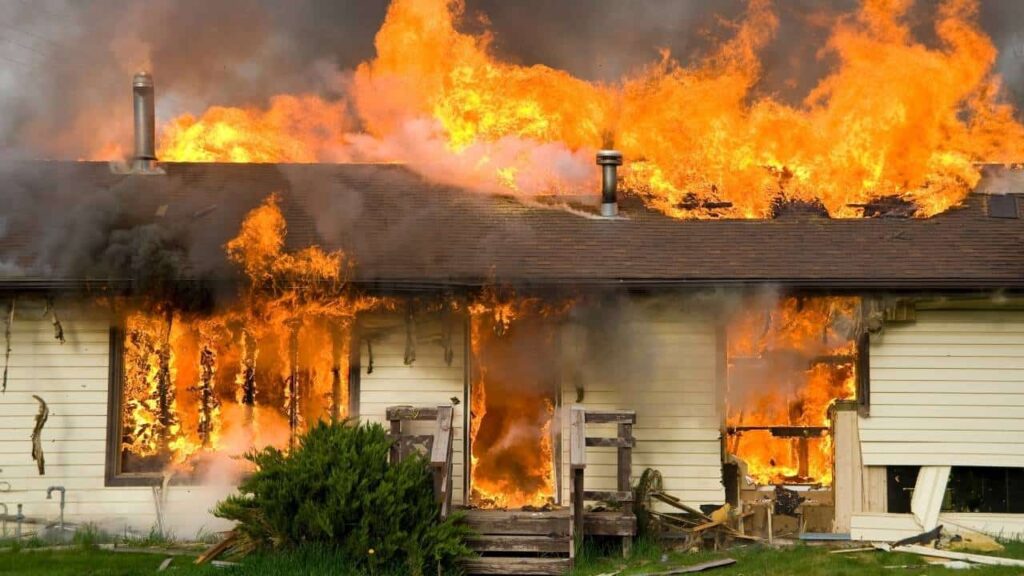
A chimney fire can put you and your family at risk while also causing serious damage to your property. Chimney fires can reach up to 2000 degrees F. Such high temperatures can melt mortar, and crack chimney bricks and flue tiles.
But the damage is not limited to the chimney. The cracks in the flue liner create passages for the fire to reach nearby combustible materials such as walls and wooden framing. That’s why a chimney fire often results in the burning of an entire house.
These cracks also create routes for CO gas to enter your living space which can be fatal.
Chimney fires can also damage prefabricated chimneys even though they are designed to bear temperatures up to 2100 degrees F. These factory-built chimneys need to be replaced if a chimney fire occurs.
While a wood stove is designed to handle high temperatures, the pipes that connect the stove to the chimney cannot bear such high temperatures. That’s why, in the case of a chimney fire, these connected pipes wrap or buckle due to the immense heat from the chimney fire. These pipes can also detach from the appliance due to the air turbulence caused by a chimney fire.
What to Do if You Have a Chimney Fire?
If there’s a chimney fire, the first thing you need to do is get yourself and your family safe and out of danger. You then need to call the fire department in case of an out-of-control fire.
Now, close any inlets to your fireplace to cut out the oxygen supply, if you think you can safely do so. A chimney fire needs fuel, heat, and oxygen; if you remove oxygen from the equation, the chimney fire will die out. Cutting out the oxygen will not always extinguish a chimney fire depending upon its intensity, nevertheless, it will help control it.
If you think you can safely open the firebox and throw in a chimney fire extinguisher, do so to avoid further damage to your chimney and your house.
It’s helpful to have a fire extinguisher at an accessible location inside your home. In case the chimney fire reaches your home and puts your home appliances aflame, a fire extinguisher will help minimize the damage.
The first thing that might come to mind when you’re outside and safe is to hose down your roof. However, that’s not a good idea. Your chimney flue and connected appliances are made from metal. These metal and steel appliances become heated due to a chimney fire. When you throw water at such heated appliances they contract and wrap. A wrapped appliance does not work efficiently and needs to be changed.
6 Ways to Prevent Chimney Fires Before They Start
Chimney fires are as preventable as they are dangerous. If you ensure the following precautions, you can minimize the chances of a chimney fire:
Conduct Annual Inspections
The National Fire Protection Association (NFPA) recommends annual chimney inspections for a reason. Annual inspections help ensure that your chimney and all its parts are in proper working condition and safe to use.
You should also have your chimney swept as soon as it starts to get dirty. If your chimney flue has ⅛ inch of creosote buildup, it’s time to get your chimney swept.
A clean chimney will never have a chimney fire because a chimney fire requires fuel in the form of soot, creosote, debris, etc.
Minimize Creosote Buildup
Creosote is the number one reason for a chimney fire. While you can’t get rid of creosote altogether, since it’s part of the normal working of a chimney, there are ways to minimize its production and prevent its buildup inside the chimney flue (liner).
Using dry, seasoned wood improves combustion and reduces creosote production. Ensuring proper airflow also helps reduce creosote.
If there are clogs inside your chimney flue, the airflow is restricted. The restricted airflow means that less oxygen is reaching the firebox and poor combustion occurs. Poor combustion produces creosote. So, by removing clogs from your chimney flue, you can minimize the creosote buildup and help prevent chimney fires.
Install a Chimney Cap
Speaking of clogs, a chimney cap is the best solution to chimney clogging. A chimney cap not only keeps rainwater out of your chimney it also keeps birds, small animals, twigs from nearby trees, and debris out of your chimney. It helps keep the chimney clean, clog-free and prevents chimney fires.
The Takeaway
Chimney fires can be scary and dangerous, but they are also preventable. Keeping your chimney clean and having annual inspections of your chimney to ensure the proper working of all chimney parts is all you need to do to prevent chimney fires.
However, if there’s a chimney fire, it’s best to get yourself and your loved ones at a safe distance and call the fire department and/or 911. Close the doors on your way out to minimize the air (oxygen). This will keep the fire from getting out of control.
Do not hose down your rooftop as it can have a damaging effect on your chimney and heating appliances.

